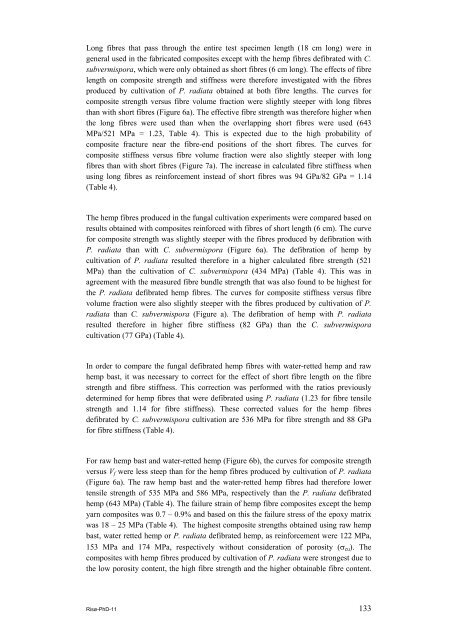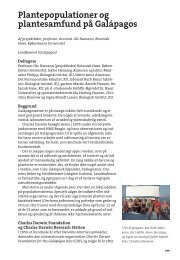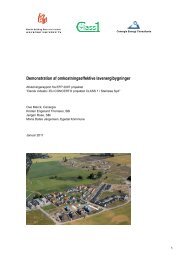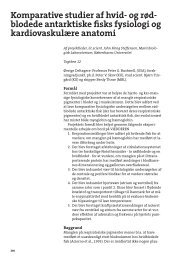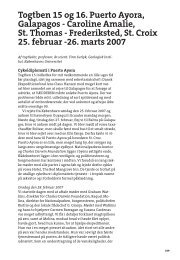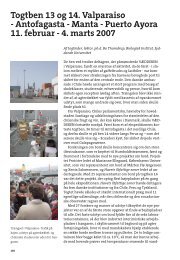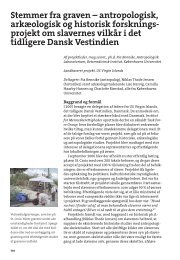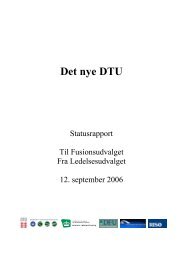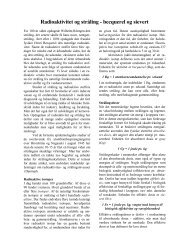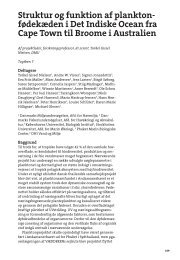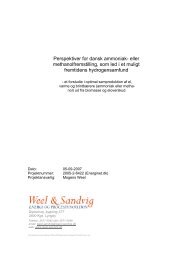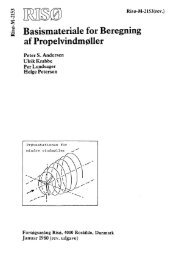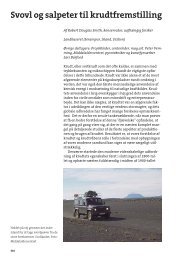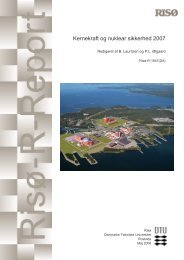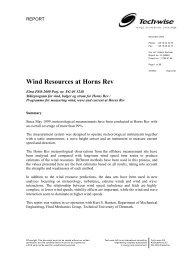Properties of hemp fibre polymer composites -An optimisation of ...
Properties of hemp fibre polymer composites -An optimisation of ...
Properties of hemp fibre polymer composites -An optimisation of ...
Create successful ePaper yourself
Turn your PDF publications into a flip-book with our unique Google optimized e-Paper software.
Long <strong>fibre</strong>s that pass through the entire test specimen length (18 cm long) were in<br />
general used in the fabricated <strong>composites</strong> except with the <strong>hemp</strong> <strong>fibre</strong>s defibrated with C.<br />
subvermispora, which were only obtained as short <strong>fibre</strong>s (6 cm long). The effects <strong>of</strong> <strong>fibre</strong><br />
length on composite strength and stiffness were therefore investigated with the <strong>fibre</strong>s<br />
produced by cultivation <strong>of</strong> P. radiata obtained at both <strong>fibre</strong> lengths. The curves for<br />
composite strength versus <strong>fibre</strong> volume fraction were slightly steeper with long <strong>fibre</strong>s<br />
than with short <strong>fibre</strong>s (Figure 6a). The effective <strong>fibre</strong> strength was therefore higher when<br />
the long <strong>fibre</strong>s were used than when the overlapping short <strong>fibre</strong>s were used (643<br />
MPa/521 MPa = 1.23, Table 4). This is expected due to the high probability <strong>of</strong><br />
composite fracture near the <strong>fibre</strong>-end positions <strong>of</strong> the short <strong>fibre</strong>s. The curves for<br />
composite stiffness versus <strong>fibre</strong> volume fraction were also slightly steeper with long<br />
<strong>fibre</strong>s than with short <strong>fibre</strong>s (Figure 7a). The increase in calculated <strong>fibre</strong> stiffness when<br />
using long <strong>fibre</strong>s as reinforcement instead <strong>of</strong> short <strong>fibre</strong>s was 94 GPa/82 GPa = 1.14<br />
(Table 4).<br />
The <strong>hemp</strong> <strong>fibre</strong>s produced in the fungal cultivation experiments were compared based on<br />
results obtained with <strong>composites</strong> reinforced with <strong>fibre</strong>s <strong>of</strong> short length (6 cm). The curve<br />
for composite strength was slightly steeper with the <strong>fibre</strong>s produced by defibration with<br />
P. radiata than with C. subvermispora (Figure 6a). The defibration <strong>of</strong> <strong>hemp</strong> by<br />
cultivation <strong>of</strong> P. radiata resulted therefore in a higher calculated <strong>fibre</strong> strength (521<br />
MPa) than the cultivation <strong>of</strong> C. subvermispora (434 MPa) (Table 4). This was in<br />
agreement with the measured <strong>fibre</strong> bundle strength that was also found to be highest for<br />
the P. radiata defibrated <strong>hemp</strong> <strong>fibre</strong>s. The curves for composite stiffness versus <strong>fibre</strong><br />
volume fraction were also slightly steeper with the <strong>fibre</strong>s produced by cultivation <strong>of</strong> P.<br />
radiata than C. subvermispora (Figure a). The defibration <strong>of</strong> <strong>hemp</strong> with P. radiata<br />
resulted therefore in higher <strong>fibre</strong> stiffness (82 GPa) than the C. subvermispora<br />
cultivation (77 GPa) (Table 4).<br />
In order to compare the fungal defibrated <strong>hemp</strong> <strong>fibre</strong>s with water-retted <strong>hemp</strong> and raw<br />
<strong>hemp</strong> bast, it was necessary to correct for the effect <strong>of</strong> short <strong>fibre</strong> length on the <strong>fibre</strong><br />
strength and <strong>fibre</strong> stiffness. This correction was performed with the ratios previously<br />
determined for <strong>hemp</strong> <strong>fibre</strong>s that were defibrated using P. radiata (1.23 for <strong>fibre</strong> tensile<br />
strength and 1.14 for <strong>fibre</strong> stiffness). These corrected values for the <strong>hemp</strong> <strong>fibre</strong>s<br />
defibrated by C. subvermispora cultivation are 536 MPa for <strong>fibre</strong> strength and 88 GPa<br />
for <strong>fibre</strong> stiffness (Table 4).<br />
For raw <strong>hemp</strong> bast and water-retted <strong>hemp</strong> (Figure 6b), the curves for composite strength<br />
versus Vf were less steep than for the <strong>hemp</strong> <strong>fibre</strong>s produced by cultivation <strong>of</strong> P. radiata<br />
(Figure 6a). The raw <strong>hemp</strong> bast and the water-retted <strong>hemp</strong> <strong>fibre</strong>s had therefore lower<br />
tensile strength <strong>of</strong> 535 MPa and 586 MPa, respectively than the P. radiata defibrated<br />
<strong>hemp</strong> (643 MPa) (Table 4). The failure strain <strong>of</strong> <strong>hemp</strong> <strong>fibre</strong> <strong>composites</strong> except the <strong>hemp</strong><br />
yarn <strong>composites</strong> was 0.7 – 0.9% and based on this the failure stress <strong>of</strong> the epoxy matrix<br />
was 18 – 25 MPa (Table 4). The highest composite strengths obtained using raw <strong>hemp</strong><br />
bast, water retted <strong>hemp</strong> or P. radiata defibrated <strong>hemp</strong>, as reinforcement were 122 MPa,<br />
153 MPa and 174 MPa, respectively without consideration <strong>of</strong> porosity (σcu). The<br />
<strong>composites</strong> with <strong>hemp</strong> <strong>fibre</strong>s produced by cultivation <strong>of</strong> P. radiata were strongest due to<br />
the low porosity content, the high <strong>fibre</strong> strength and the higher obtainable <strong>fibre</strong> content.<br />
Risø-PhD-11 133


